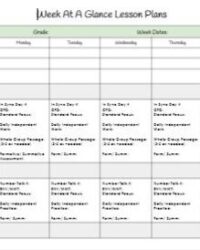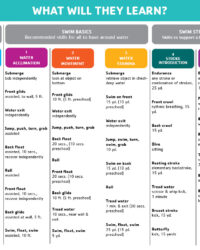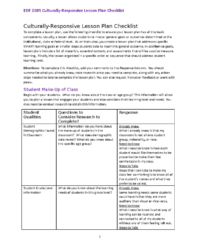It’s no secret that traditional teaching methods sometimes fall short in truly engaging students and fostering real-world skills. Many educators are now turning to task-based learning, an approach that puts meaningful communication and authentic tasks at the heart of the classroom experience. But how do you effectively plan for such dynamic lessons? That’s where a well-structured task based lesson plan template becomes indispensable.
Imagine a classroom where students are actively solving problems, collaborating, and producing tangible outcomes, not just memorizing facts. This learner-centered methodology requires careful preparation, and having a systematic framework helps ensure every lesson is coherent, purposeful, and genuinely effective. It’s about moving beyond simply delivering content to facilitating genuine learning through doing.
The Core Components of an Effective Task-Based Lesson Plan
Crafting a successful task-based lesson means thinking beyond a simple sequence of activities. It’s about designing a pedagogical journey that guides learners through stages of preparation, authentic engagement, and subsequent reflection. A robust task based lesson plan template will typically break down the lesson into distinct, yet interconnected, phases to ensure a smooth flow and maximize learning potential. It’s not just about what students do, but how they’re prepared for it and what they gain from it.
The initial stage, often called the Pre-task, is crucial for setting the scene. Here, the teacher introduces the topic, activates prior knowledge, and perhaps pre-teaches any essential vocabulary or grammar structures that might hinder task completion. This isn’t about giving away all the answers, but rather providing the necessary scaffolding and motivation. It could involve brainstorming, watching a short video, or discussing related experiences, all designed to get learners thinking about the upcoming task and the language they might need.
Following the pre-task is the Task Cycle itself, the heart of the lesson. This stage typically involves the actual task performance, where students work individually, in pairs, or in groups to complete a meaningful activity. The emphasis here is on fluency and communication, allowing learners to use the language naturally to achieve a non-linguistic outcome. This could be anything from designing a travel itinerary, solving a riddle, negotiating a deal, or creating a presentation. The teacher’s role during this phase is primarily as a facilitator, monitoring, providing support when needed, but largely allowing students to grapple with the language independently. The reporting phase, where groups share their outcomes, reinforces communication.
Finally, the Language Focus stage is where the learning truly crystallizes. After students have engaged with the task and identified their linguistic needs or challenges, the teacher can then address specific language points that emerged during the task cycle. This could involve targeted grammar explanations, pronunciation practice, or vocabulary review. It’s a reactive stage, responding directly to the language used (or misused) by the students, making the learning relevant and immediate. This reflective analysis ensures that while the task emphasizes fluency, accuracy is not forgotten. A well-designed template helps teachers systematically guide students through these vital stages.
Key Sections to Include in Your Template
- Lesson Title and Objectives
- Target Audience/Level
- Time Allotment for Each Stage
- Materials and Resources Needed
- Pre-task Activities and Expected Outcomes
- Task Cycle Description and Instructions
- Language Focus Points and Activities
- Assessment Criteria
- Potential Problems and Solutions
Benefits of Following These Stages
Adhering to these stages within your template provides a clear roadmap for both you and your students. It ensures that learners are adequately prepared, given ample opportunity to practice, and then provided with targeted feedback on their language use. This structured yet flexible approach is what makes task-based learning so effective for developing practical communication skills.
Implementing Your Task Based Lesson Plan Template in Practice
Having a solid task based lesson plan template on paper is one thing, but bringing it to life in the classroom is where the magic truly happens. It’s important to remember that while the template provides a framework, flexibility is key. Real classroom dynamics often require on-the-spot adjustments, and a good template should be adaptable enough to accommodate unforeseen challenges or opportunities for deeper learning. Think of it as a guide, not a rigid script.
When you’re actually using your template, consider how you might adapt tasks for different proficiency levels or learning styles. A single task can often be modified to be more challenging for advanced learners or simplified for beginners, perhaps by providing more scaffolding or fewer constraints. Differentiation ensures that all students feel challenged and supported, making the task accessible and engaging for everyone in the room. This might involve preparing alternative materials or varying group formations.
Post-lesson reflection is another critical step that your template implicitly supports. After delivering a lesson, take some time to review what worked well and what could be improved. Did the students understand the task? Was the language focus appropriate? This ongoing evaluation helps you refine your teaching approach and even modify your template for future use, making it an evolving tool that grows with your experience. It’s a cyclical process of planning, executing, and refining, all aimed at enhancing the learning experience.
- Pilot new tasks with a small group first if unsure.
- Observe student interactions closely during the task cycle.
- Encourage peer feedback during reporting phases.
- Keep a log of common errors for future language focus.
- Share successful task ideas with colleagues.
Embracing task-based learning is a powerful way to transform your classroom into a dynamic, learner-centered environment. By utilizing a well-designed template, you’re not just creating a lesson plan; you’re crafting an experience that promotes authentic communication, critical thinking, and genuine skill acquisition. It provides the structure needed to facilitate engaging tasks while ensuring that valuable language learning occurs naturally and purposefully.
Ultimately, the goal is to empower students to use language effectively in real-world contexts. A carefully constructed lesson framework supports this ambition, allowing educators to focus on facilitating learning rather than scrambling for activities. It’s an investment in more effective teaching and, more importantly, in more engaged and capable learners.


